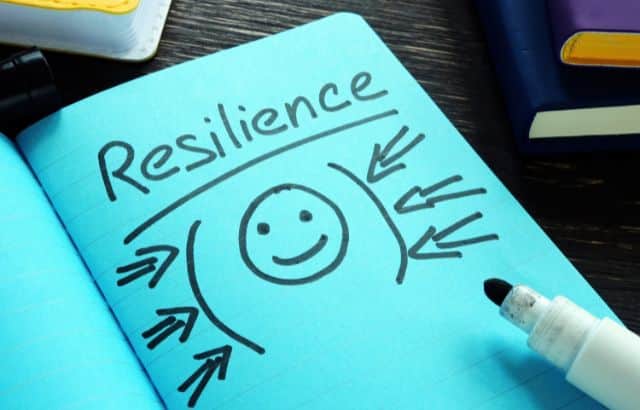In life, we are bound to experience a spectrum of emotions – from the worst times that leave us battered and bruised, to the okay moments that offer a respite, and the absolute best times that make us feel invincible. The ups and downs can sometimes feel like a never-ending rollercoaster ride, but there is a way to find resilience through it all.
Table of Contents
The importance of resilience in life
- Resilience is a fundamental skill that allows us to navigate the challenges and uncertainties of life with grace and perseverance.
- It is the ability to bounce back from setbacks, adapt to change, and maintain a positive outlook even in the face of adversity.
- Resilience is what helps us overcome obstacles, learn from our experiences, and ultimately grow stronger.
Understanding the rollercoaster of life
- Life is often compared to a rollercoaster, with its ups and downs, twists and turns. Understanding the nature of this rollercoaster is essential for embracing it with resilience.
- The worst times challenge us, test our limits, and push us to grow.
- The okay times provide stability and routine, giving us a chance to catch our breath.
- The absolute best times bring joy, success, and fulfilment.
- By acknowledging and accepting the rollercoaster nature of life, we can begin to shift our mindset and approach the challenges and victories with a sense of resilience and gratitude.
The worst times: How to navigate through challenges and setbacks
- Life’s worst times can be incredibly challenging, leaving us feeling overwhelmed, defeated, and lost. However, it is during these moments that resilience becomes our greatest ally.
- To navigate through challenges and setbacks, we must first acknowledge our emotions and allow ourselves to grieve, heal, and process our experiences.
- Next, it is important to reframe our perspective and view these difficult times as opportunities for growth and learning.
- By embracing a growth mindset, we can find the strength to overcome obstacles, learn from our mistakes, and come out stronger on the other side.
- Additionally, practicing self-care, seeking support from loved ones, and developing healthy coping mechanisms can all contribute to our resilience during the worst times.
- By taking care of ourselves both physically and emotionally, we can better navigate the rollercoaster of life’s challenges.
The okay times: Maintaining resilience during periods of stability and routine
- While the okay times may not be as exhilarating as the best times or as challenging as the worst times, they serve an important purpose in our lives.
- These periods of stability and routine allow us to recharge, reflect, and prepare for the next twist or turn on the rollercoaster of life.
- To maintain resilience during the okay times, it is crucial to avoid complacency. Instead of simply coasting through these periods, we can use them as an opportunity to set goals, pursue new interests, and continue growing.
- By staying curious, proactive, and open to new experiences, we can strengthen our resilience and make the most of the okay times.
The absolute best times: Embracing success and managing expectations
- The absolute best times in life are often characterized by success, joy, and fulfillment.
- While these moments can be incredibly rewarding, they can also come with their own set of challenges.
- It is important to approach these times with a sense of gratitude and humility, recognizing that they are not permanent and that the rollercoaster of life will continue to bring both highs and lows.
- To embrace the absolute best times with resilience, it is crucial to manage expectations and avoid becoming complacent.
- Instead of resting on our laurels, we can use these moments as motivation to continue pushing forward, setting new goals, and pursuing personal growth.
- By maintaining a growth mindset and staying grounded, we can navigate the rollercoaster of success with resilience and grace.
Building resilience: Strategies and techniques for developing resilience
Building resilience is a lifelong journey that requires practice, self-reflection, and the willingness to face challenges head-on. Here are some strategies and techniques that can help develop resilience:
- Cultivate self-awareness: Take time to understand your strengths, weaknesses, and triggers. By knowing yourself better, you can navigate the rollercoaster of life with greater self-assurance.
- Practice mindfulness: Mindfulness techniques, such as meditation or deep breathing exercises, can help you stay present, manage stress, and cultivate resilience.
- Reframe negative experiences: Instead of dwelling on the negative aspects of a situation, look for opportunities for growth and learning. Reframing negative experiences can help you build resilience and find meaning in difficult times.
- Set realistic goals: Setting realistic and attainable goals can help you stay motivated, focused, and resilient. Break big goals into smaller, manageable steps to make progress and build confidence along the way.
- Take care of your physical and mental health: Prioritize self-care by getting enough sleep, eating well, exercising regularly, and seeking professional help if needed. Taking care of your well-being is essential for building resilience.
Seeking support: The role of community and relationships in resilience
No one can navigate the rollercoaster of life alone. Building a strong support network is crucial for developing resilience. Surrounding yourself with positive and supportive people can provide encouragement, guidance, and a sense of belonging. Whether it’s friends, family, mentors, or support groups, seeking support from others is a powerful tool for resilience.
Mindset and perspective: Shifting your mindset to foster resilience
Our mindset and perspective play a significant role in how we navigate the rollercoaster of life. By cultivating a growth mindset and adopting a positive outlook, we can approach challenges with resilience and see setbacks as opportunities for growth. Shifting our mindset begins with challenging negative thoughts, reframing our perspective, and focusing on solutions rather than problems.
Cultivating gratitude and self-care: Nurturing resilience through self-care practices
Practicing gratitude and self-care are essential for nurturing resilience. Cultivating gratitude allows us to shift our focus from what’s going wrong to what we have to be thankful for. By practicing self-care, we prioritize our well-being and recharge our physical, mental, and emotional energy. Engaging in activities that bring us joy and relaxation can help us bounce back from setbacks and maintain a sense of resilience throughout the rollercoaster of life.
Conclusion: Embracing the rollercoaster of life with resilience
Life is a rollercoaster ride filled with ups and downs, twists and turns. Embracing this rollercoaster with resilience allows us to navigate the worst, the okay, and the absolute best times with grace and courage. By cultivating resilience, seeking support, shifting our mindset, and practicing self-care, we can not only survive but thrive in the face of adversity. So, let’s strap ourselves in, hold on tight, and embrace the rollercoaster ride of life with resilience.
Remember, life’s journey is not about avoiding the lows or chasing after the highs, but about finding the strength within ourselves to navigate the twists and turns with resilience and gratitude. Embrace the rollercoaster, for it is through the ups and downs that we truly learn, grow, and become the best version of ourselves.































